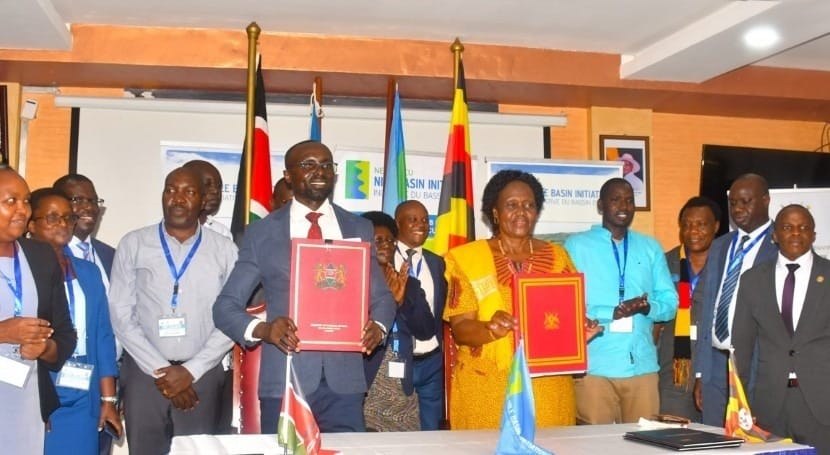Kenya and Uganda have officially signed a $137 million bilateral agreement to implement the Angololo Water Resources Development Project (AWRDP), a cross-border initiative designed to strengthen food security, expand energy access, and promote regional integration for over 300,000 people in the Sio-Malaba-Malakisi River Sub-basin.
The deal was sealed in Busia County by Kenya’s Cabinet Secretary for Water, Sanitation and Irrigation, Eng. Eric Muga, and Uganda’s Minister for Environment, Beatrice Atim Anywar. It marks a major step in a long-standing regional vision first proposed in 2010 and later developed under the Nile Equatorial Lakes Subsidiary Action Program (NELSAP) of the Nile Basin Initiative. Funding is being provided by the African Development Bank (AfDB) and the NEPAD Infrastructure Project Preparation Facility.
“This project will not only provide clean water but also create jobs and power for our communities in both Kenya and Uganda,” said Eng. Muga, noting that the project will benefit areas including Busia and Bungoma counties in Kenya and Tororo, Namisindwa, and Manafwa districts in Uganda.
The ambitious development plan includes the construction of a 40-metre-high dam with a storage capacity of 31.6 million cubic metres, a 1.3 MW hydropower facility, and a 20 MW floating solar system. It will also support a 4,000-hectare irrigation scheme — split between the two nations — and restore 30% of the degraded 447 km² catchment area.
The construction phase, anticipated to begin in the 2026/2027 fiscal year, is expected to create employment opportunities, particularly for youth in the Teso North region. Project operations are projected to commence by 2030.
Uganda’s Minister Anywar described the project as a powerful example of local-led solutions. “We can do great things when we come together,” she said. “We must rely less on external conditions and invest more in our own regional potential.”
This initiative aligns with Kenya’s Vision 2030 and Uganda’s Vision 2040 strategies, underscoring a shared commitment to sustainable development and long-term regional cooperation.



